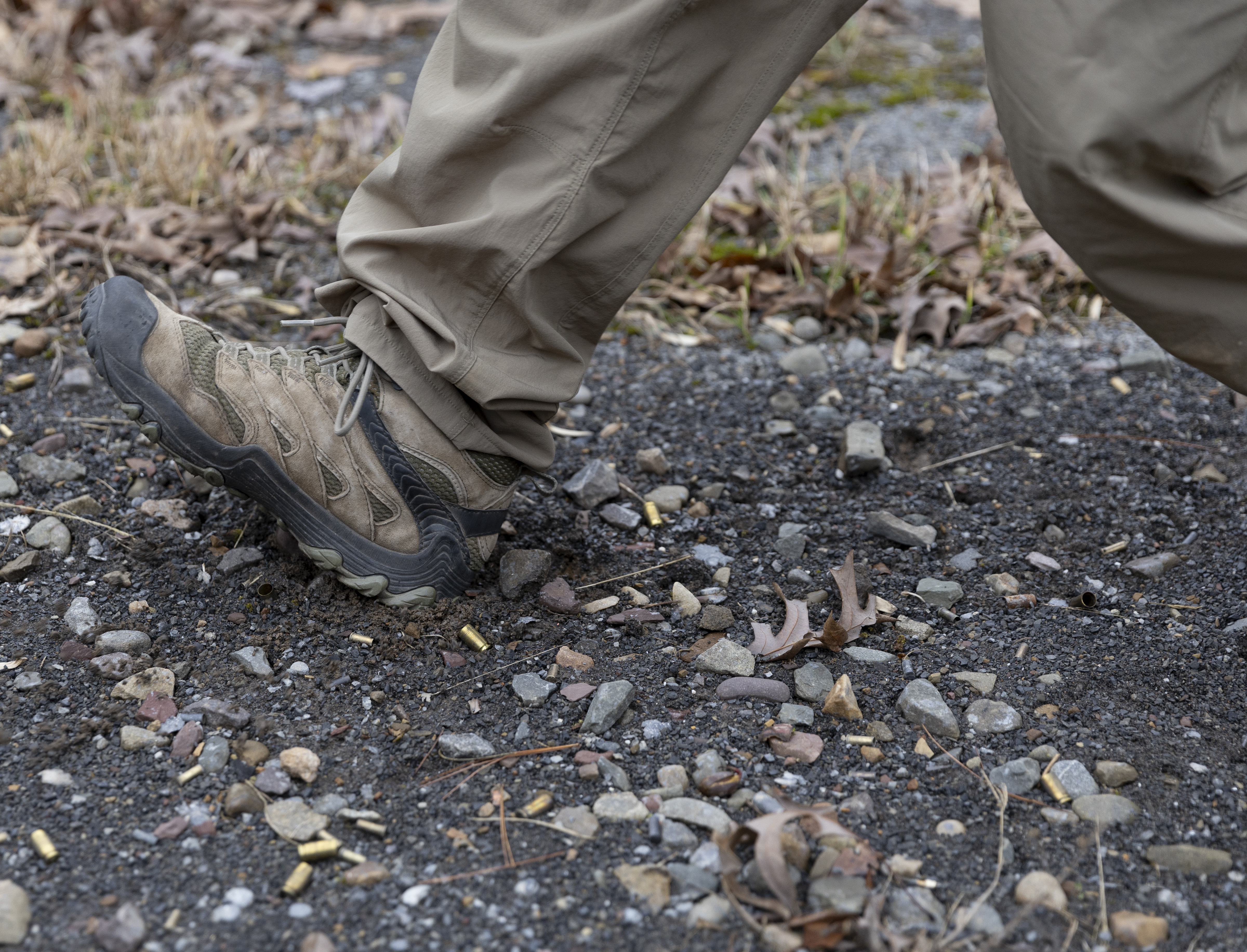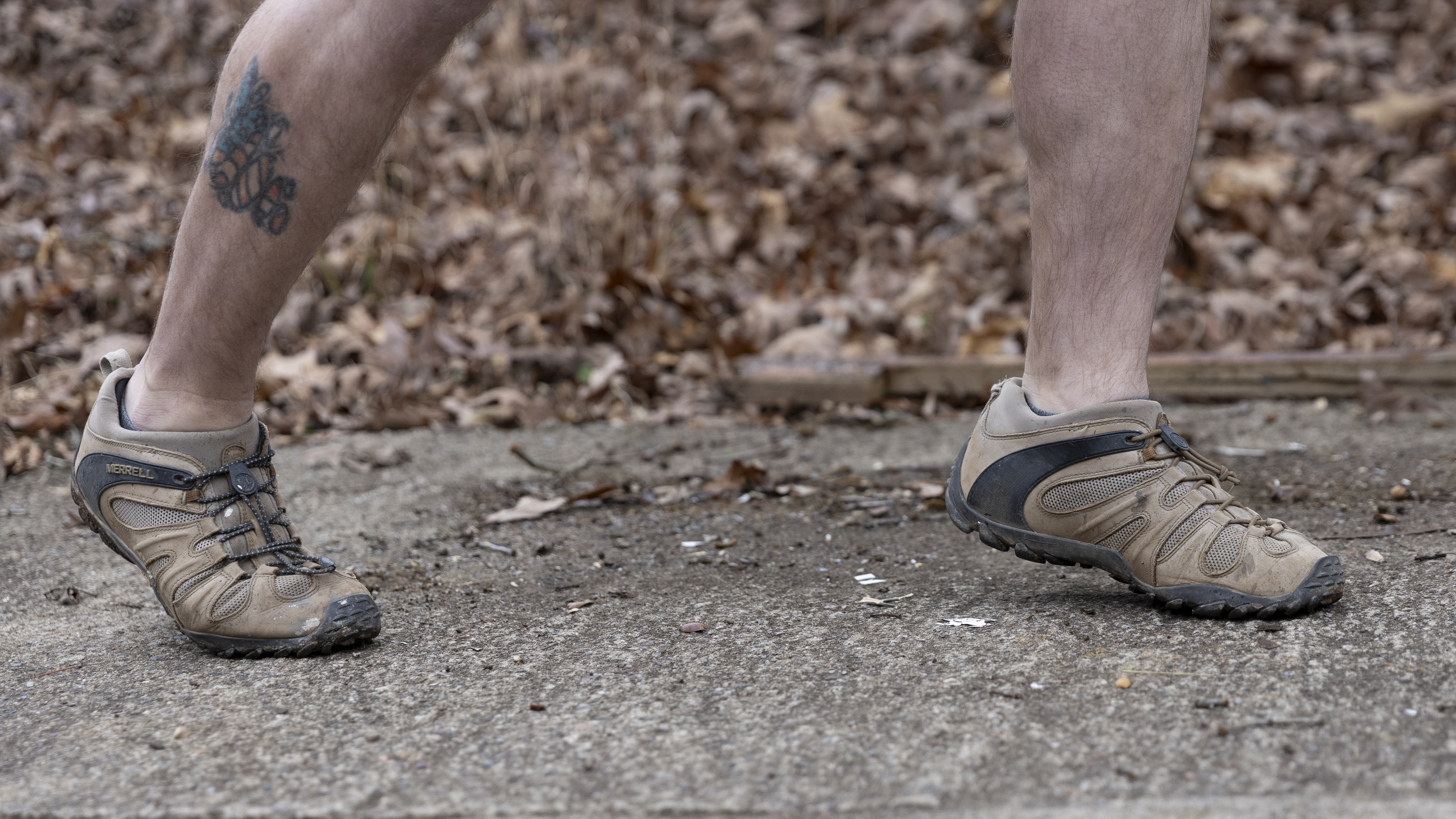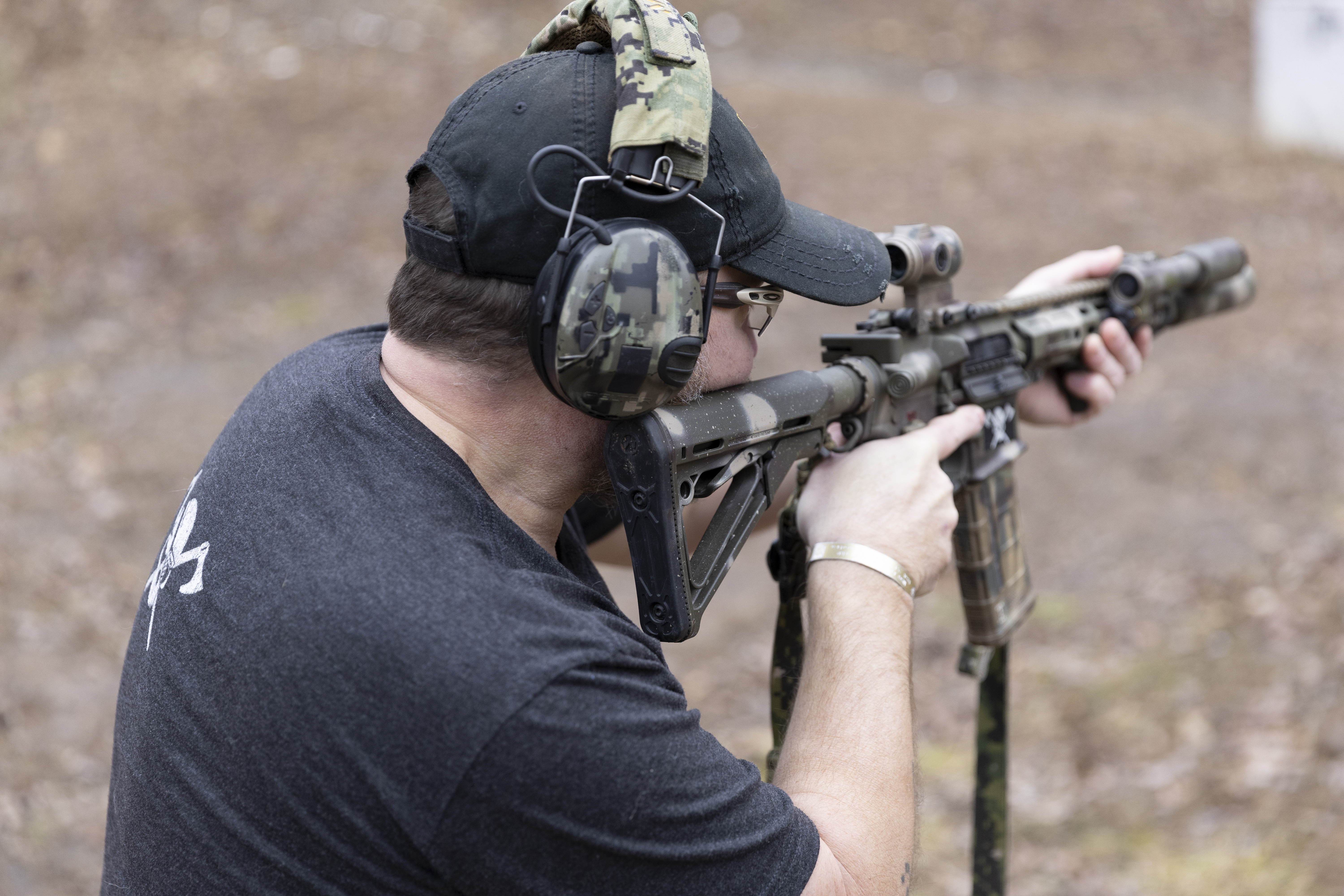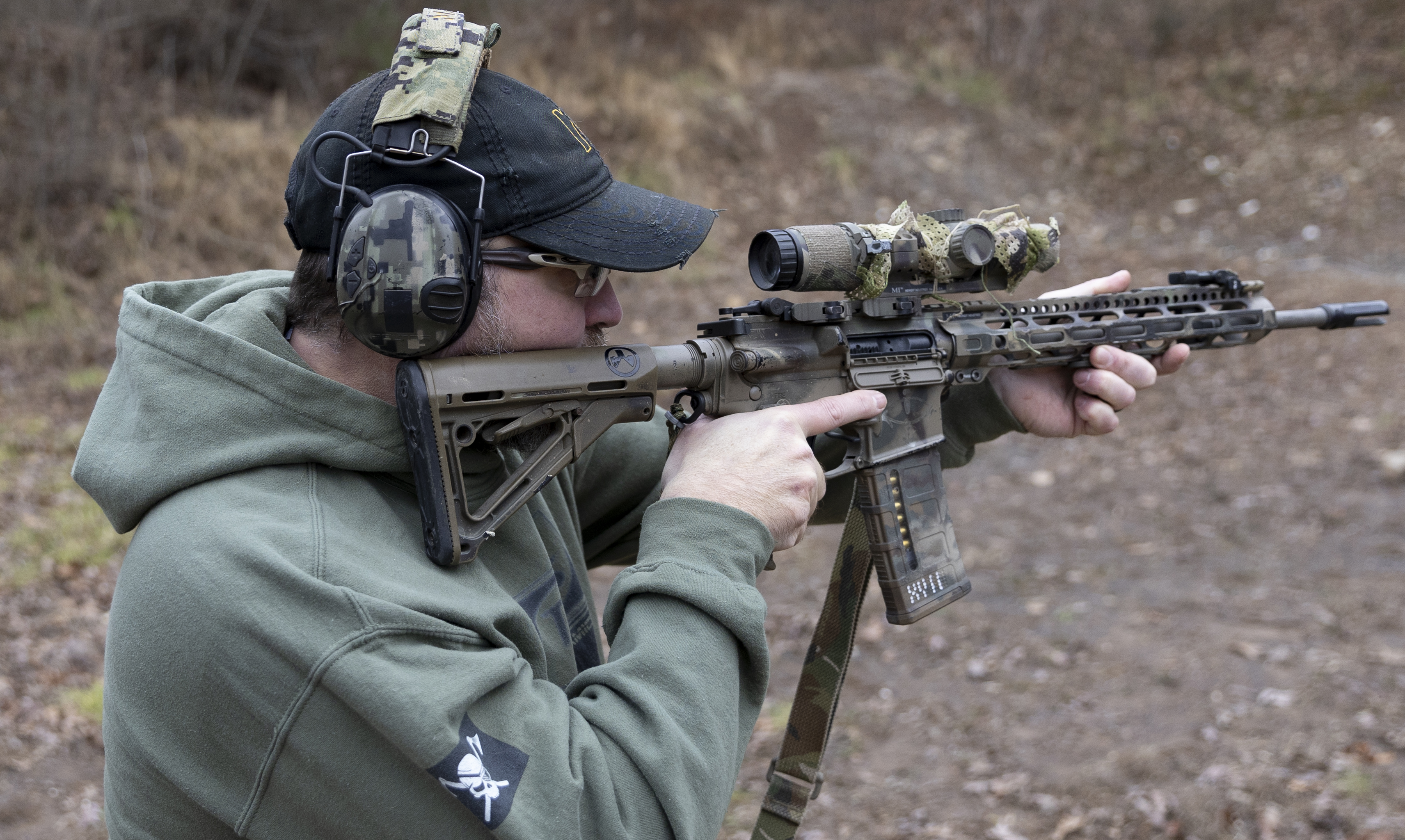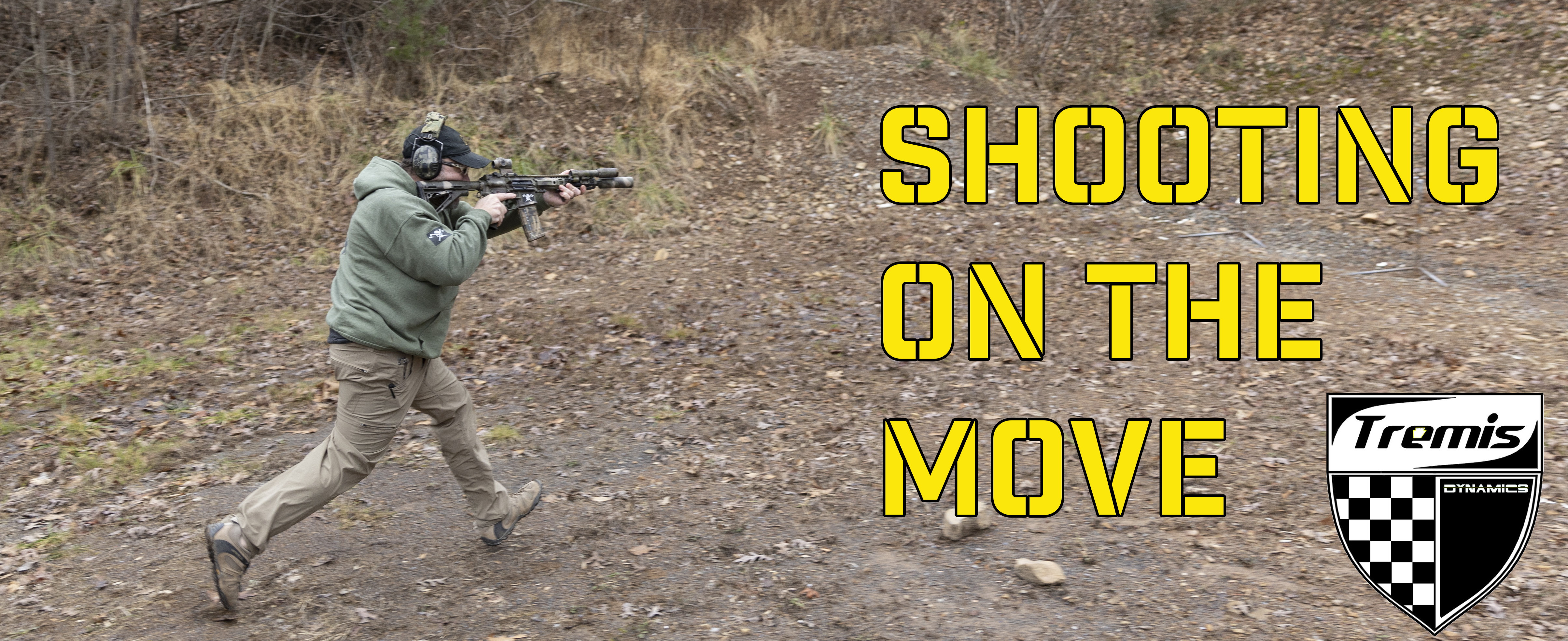
It’s what we do here at Tremis Dynamics. In fact, we tend to eschew drills that only measure marksmanship and speed. The amount of movement the shooter makes is critical to any drill having recordable value. It is the reason that the Trem Dyn Pistol Qual has the minimum measured movement required to pass and get the gold dog tag. Standards comprised of only Accuracy and/or Speed were designed by people who can't shoot on the move to stroke their ego.
But there’s more to shooting on the move than just doing what you've always done, except that your feet are in motion. The point of moving your fucking feet is to reduce the likelihood of sustaining damage from your opponent. When you watch IDPgAy shooters shoot on the move, their feet are moving just fast enough for the SO to check the box that they are indeed moving. What we like to do in class is have students who are on the other relay try and airgun the shooters as they shoot from the same distance as the bad guy, if possible. So if a shooter is shooting at 10 yards, we have a non-shooter at 20 yards try and keep his meat-gun on the shooter while the shooter is performing a drill. This represents the difficulty a bad guy would have in landing hits on our good guy. 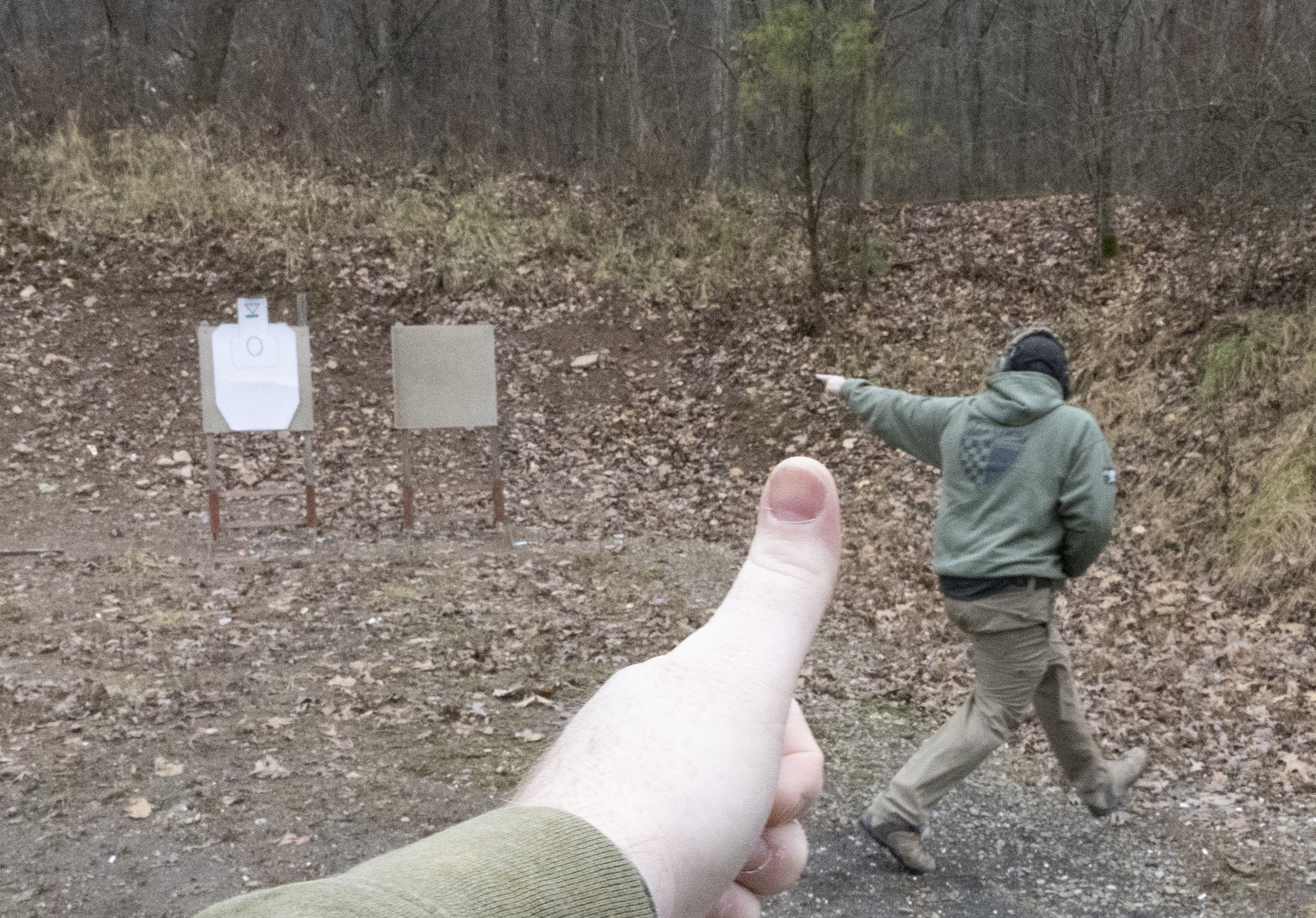 You will find that most shooters do not move adequately to help themselves much. They prefer to line up like were on Lexington Green and are just willing to trade blows until only one person is left standing. Flip a coin and find a winner. That's just not ok with us.
You will find that most shooters do not move adequately to help themselves much. They prefer to line up like were on Lexington Green and are just willing to trade blows until only one person is left standing. Flip a coin and find a winner. That's just not ok with us.
Many schools don't address the need to shoot on the move, mainly because the instructor isn't good at it. We decided the better choice was to put the work in and get good at it.
The Lower Half.
In our Dynamic Pistol handout, we have something we talk about with our eyes to make aiming on the move easier; feel free to check that out. But here, let's talk about something we can do with our feet as well as something we can do specifically to rifles and carbines.
When it comes to our feet, we have a few options. The simple thing to do is just walk like we always do. As it turns out, that is a viable method. The only downside is that many folks walk very inefficiently all the time. Very jarring, with a lot of heel strikes sending shocks through the body. Our brain just happens to be the best Image Stabilization computer on the planet. So it just compensates so that we can see while our body violently jars itself with each step. The downside to this is that it stabilizes the image; it doesn't dampen any of the actual vibration being transferred to our sights through our shoulder.
The method most often taught for damping vibration from walking is curious. A heel strike to the ground followed by a slow roll onto the balls of the feet. The slow rolling reduces some of the vibrations, but the preceding heel strike is the most jarring thing we can do to our sights. The fix for many instructors is to slow the students down so they are heel striking softer by being very slow with dropping the heel. While that does work, any guess what that does to walking speed? Yup, puts it just a smidge faster than an IDPA match and a little slower than walking backward. We do get to check off the box of Moving.☑
The method we prefer to use is to plant the ball of the foot first, like a sprinter. It allows for a better energy transfer, which is the main reason they use it, but it also allows for a lot more vibration dampening. Most of the vibration can be mitigated in the foot before it even transfers to the heel. Now, the ankle, knees, hips, etc are working to reduce less initial vibration by omitting the heel strike, and what they are reducing has already been grossly reduced by the flexibility in the foot itself. This is why we naturally walk on the balls when we try to be sneaky; even children know it works best for not being loud and jarring.
My good friend Sonny Puzikas described it once as “Reaching out with your foot and pulling the earth towards you.” For a guy whose English wasn't his first language, he sure did find the best description of how to connect my foot to Gaia with the utmost efficiency. If you want to run some fun side-by-side tests, a treadmill, graph paper, and a laser can show some startling differences in how our feet impact the ground and how that affects our ability to aim. It also happens to be a pile faster than slow heel strikes and rolling the foot.
There are also some significant benefits to changing direction more efficiently, as well as some applications around cover, concealment, and barricades. More stuff for more articles.
Anything we can do in the upper half?
You bet! It’s actually the most magical difference when shooting a rifle. We usually have 4 solid points of contact on a rifle. We typically have our feet anchored to the ground in a “perfect shooting stance” as well. Why do we do this? Well, the feet thing is so we don't move as much, making aiming easier. But we’re already past that and have decided to move while we shoot because we’re not fighting redcoats. The 4 points of contact? Well, the hands make it easy to manipulate the gun, getting it where we want and keeping it there. Folks have spent countless hours working out the best placements for those hands. That could be a series of articles in its own right. We’re not tackling that here today.
The other two locations are the cheek and the shoulder. They accomplish different things, and different folks put differing levels of importance on them. The cheek is so we can more efficiently use the sights. We can get them in front of our pupil faster using a cheekweld, and we can keep them there with less physical effort using a cheekweld. Of the 4 touchpoints, It’s the one I’m least willing to compromise. I’m not going to run a chin weld or a “somewhere on my face” weld. Locking it into the bottom of my cheekbone will always be faster to acquire my sights and make keeping them in front of my eye less burdensome. Nothing gained from having a different type of “faceweld” outweighs these considerations.
The last one is perplexing with a modern carbine. We put the stock to our shoulder so the massive forces of recoil have somewhere to go. Let's read that again, but slower this time.
Ok, since you all aren't retarded, I don't need to explain the recoil forces of a modern carbine. We can just agree that they are so minimal that we can essentially disregard the need to control them. Some smart fellas have demonstrated with those fancy RED cameras that by locking the back of the stock against a fixed object (like a shoulder), you will increase muzzle rise by orders of magnitude. By removing that point of contact, the rifle moves almost perfectly linearly to the rear. It may or may not travel more distance rearward than it does upward when the stock is fixed, but the direction is certainly better to the rear than upwards, even if the total distance moved has increased.
For the sake of argument, what if we just didn't shoulder the stock to reduce those massive blows of force created by the mighty .223?
How does that affect everything else? Well, remember back when we were talking about vibration dampening?
And how, by adding more joints, we could more effectively dampen the vibration?
How about on the rifle we get to add a shoulder joint, an elbow, a wrist, and maybe some of those 54 joints in our hands?
Here’s another side benefit: the only place we’ve anchored the rifle to happens to contain the best Image Stabilizer ever created. You are likely to notice that by taking the rifle out of the shoulder and keeping it anchored to your cheek, your red dot/reticle will reduce how much it bounces around while you move by so much you’ll think you are doing something wrong. It literally is an instant feedback that seems like cheating.
In the photos here, we grossly over-emphasized the decoupled shoulder, it does not normally need to be very far off the shoulder; however, we wanted it to be visible for photos.
But what happens if we press the trigger? Well, hopefully, the gun fires. When it does, it will move a little bit straight to the rear, and you will never lose the dot and it will move off target about the same or less than when it’s planted in your shoulder. Then, you have the option to follow up with more or whatever else you might do after making a solid hit.
When we documented our findings among multiple shooters of various skill levels, we found two interesting data points. The traditional scale of movement speed vs. accuracy was not present. Shooters moved quicker without degrading accuracy or at the same speed with increased accuracy. What the internet is about to do, though, is go shoot stationery and compare standard square range shooting stance vs this “decoupled” shoulder method and start making some claims. Our answer to them is simple. If your feet aren’t moving quickly enough to make you a more difficult target, I care fuckall about your results.
There’s a trend right now to discard a cheekweld and maintain the anchor to the shoulder pocket at all costs. This is done under the guise of “comfort and natural body position”. Finding the reticle is reduced to “maybe nice if it happens.” As for comfort, I don't know about you all, but my head moves around all day, and I find none of those various locations to cause discomfort. And weirdly enough, every single student I’ve ever seen, lowers their head the moment projectiles start coming their way, almost like it’s natural. A few schools have invented a few other reasons, but that topic is going to be covered here in the future. When it is, I’ll come back and link it. If you are reading this, that article hasn't been published yet.
You can probably deduce from this decoupled photo that I’m not experiencing discomfort, and my head is in a quite natural position. I also don't need a 3” mount on my optic. (This would be a poor article if I sold 3” optic mounts.) I often get a hunch that the entire point of instructors omitting the cheek weld and anchoring the gun to the shoulder is just a ruse to sell an overpriced optic mount. But in doing so, they are also anchoring their students' feet to the earth and recreating 18th-century warfare.
There are multiple ways to test all of this. One can perform the aforementioned test with a treadmill and laser. You can also head to the range and do some live-fire tests. One of the other ways we like to test this type of thing is in the Shoothouse running UTM guns against resisting opponents. We get the same results in all three types of testing, and that’s why we shared this with you.


